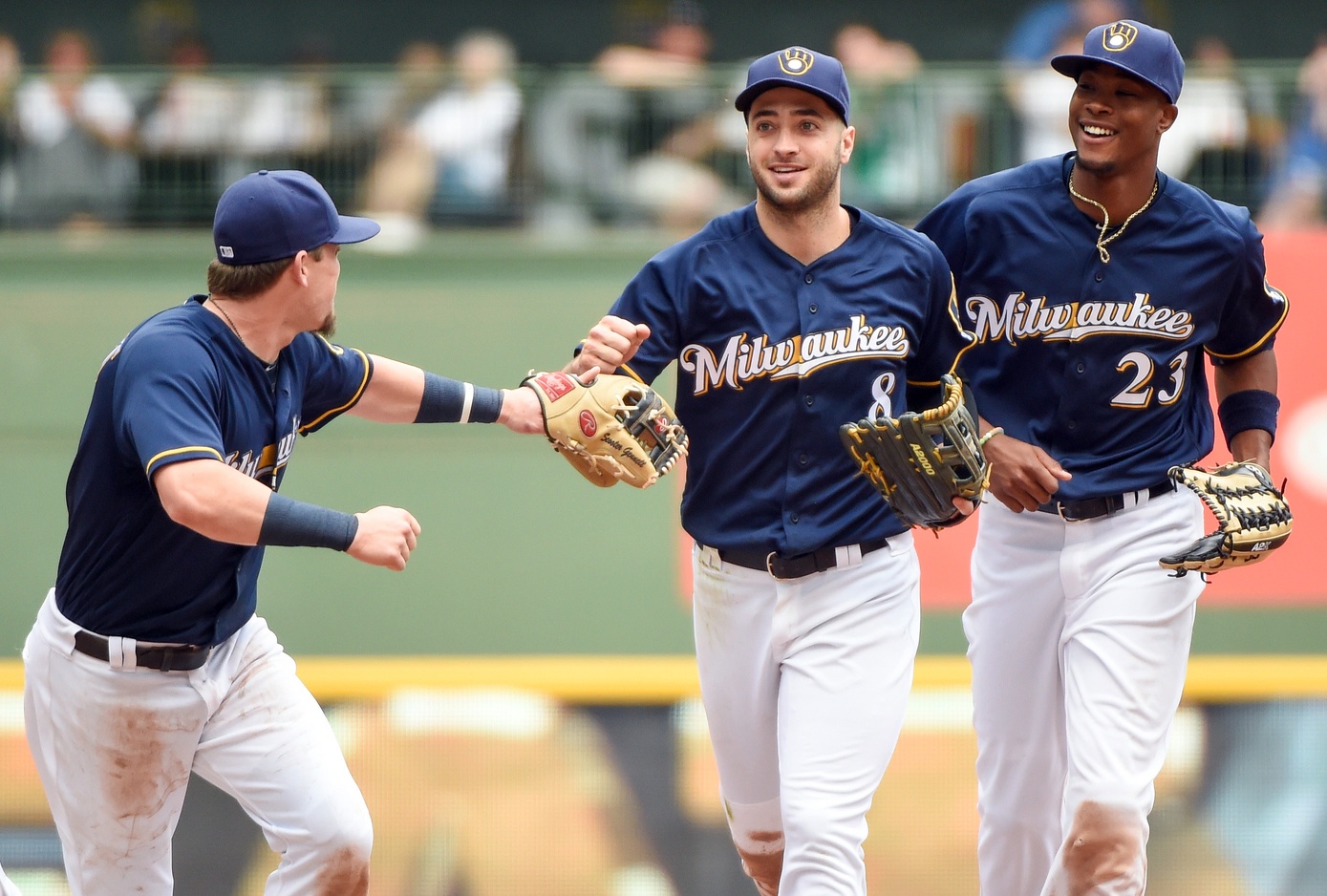Behind a win Sunday over the Mets, powered by another strong start from Zach Davies, the Brewers elevated their record to 30-33. The Brewers had already lost 48 times last year by the time they won their 30th game, and they are far closer to teams like the Cardinals, Pirates and Dodgers in the standings then they are to some teams expected to be their fellows in tanking in 2016 like the Braves and Reds (as well as the Twins, who aren’t even trying to be as awful as they’ve been this season). As such, I feel fairly confident in proclaiming this year’s Brewers squad to be Not Awful.
It’s still a team with some glaring weaknesses, of course. The lineup is shallow, as the Brewers have struggled to find production from second base or their non-Ryan Braun outfielders. The starting rotation is ghastly despite the ascension of Junior Guerra, and while Jeremy Jeffress has been successful as closer, the bullpen is shallow.
But this team is developing a solid core to go along with Ryan Braun and Jonathan Lucroy. Jonathan Villar’s 2.1 BWARP entering Sunday’s game put him squarely between the established Brewers stars (Lucroy at 2.4, Braun at 2.0). Chris Carter’s 17 home runs and 40 RBI lead the club. Tyler Thornburg (2.47 DRA, 0.8 PWARP) is looking like an able setup man for Jeffress in the bullpen. Davies (4.60 DRA) and Chase Anderson (4.40 DRA) are looking like they belong in a major league rotation, even if they will never front one.
The Brewers will likely be adding to that core shortly. Consensus top-15 prospect Orlando Arcia is hitting a cool .292/.331/.407 for Colorado Springs and might already be up if it wasn’t for service time concerns. Josh Hader has dominated Double-A to the tune of a 0.95 ERA and 73 strikeouts in 57 innings, and has already earned a promotion to Triple-A. Catcher Jacob Nottingham and outfielder Brett Phillips were named to the Double-A All-Star team for their performance at Biloxi. And it’s possible young players like Domingo Santana, who continues to miss time due to injury, or Hernan Perez, who might be finally putting it together this time around in the big leagues, could take a major step forward before the year ends.
This year’s Brewers are merely Not Awful, as their weaknesses will almost certainly prove big enough to prevent them from competing with the Cardinals and Pirates, who lead Milwaukee by only 4.5 and 2.5 games respectively. Potential trades of Braun, Lucroy, Jeffress, Will Smith, Aaron Hill, or possibly Villar could very well make this team Fully Awful by the time the second half rolls around. But at least that would mean more young talent to build around rather than stagnation many analysts — myself included — expected out of this team heading into the season.
The more I watch this team, the more I’m convinced the kind of protracted rebuild I feared the club would be put through isn’t going to be necessary. Because of the way a core is starting to form around Braun and Lucroy, the Brewers don’t have to treat the trade deadline like a fire sale if the market isn’t there. As I detailed last week, a Jonathan Lucroy contract extension is well within the Brewers’ means, and I still remain skeptical that anybody around the league will offer worthwhile value for Braun given his PED baggage.
The ugliest part of a rebuild is usually the teardown, when the remaining good players are traded away to make space for prospects. The Brewers already engaged in that teardown when they traded away Carlos Gomez, Mike Fiers, Aramis Ramirez, Gerardo Parra and Jonathan Broxton at the last trade deadline, and then Adam Lind, Jean Segura, Francisco Rodriguez, Luis Sardinas, Jason Rogers, and Khris Davis in the offseason. To offload that much talent in such a short time and still have a semi-competent roster at the Major League level speaks volumes to the return the Brewers got on their trades and the talent they already had on hand. There is still a long way to go, to be sure, but the Brewers have turned over their roster remarkably quickly, and perhaps they don’t have as far to go as we thought just a few months ago.

1 comment on “So, The Brewers Aren’t Awful”